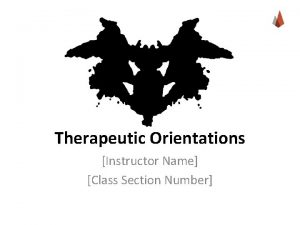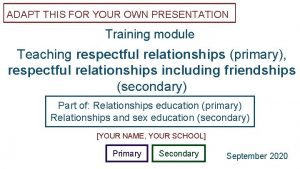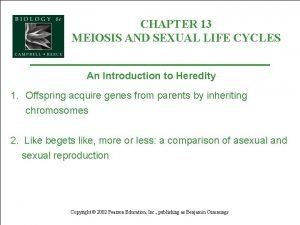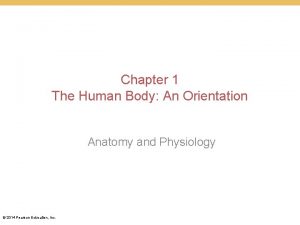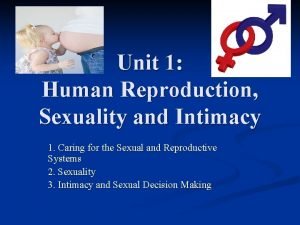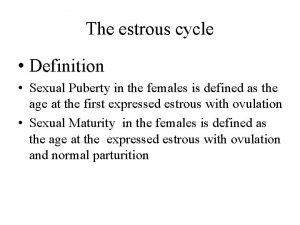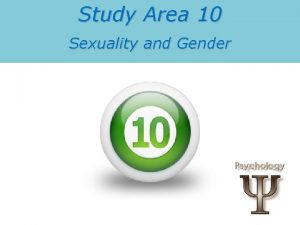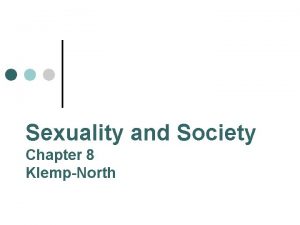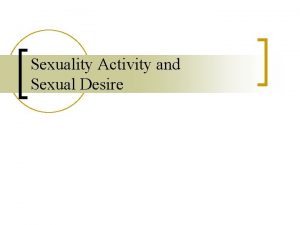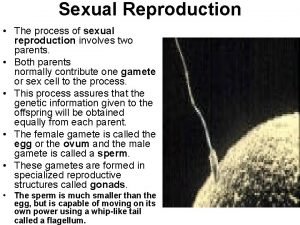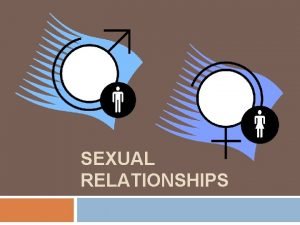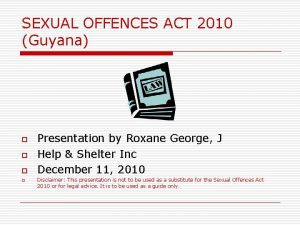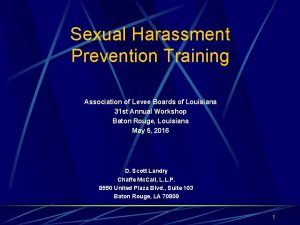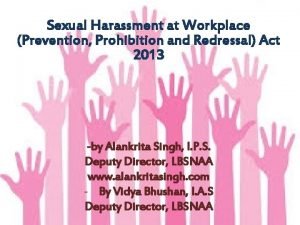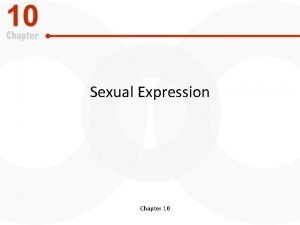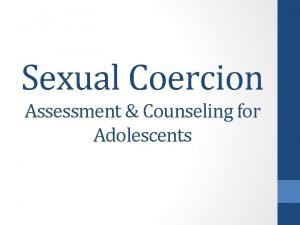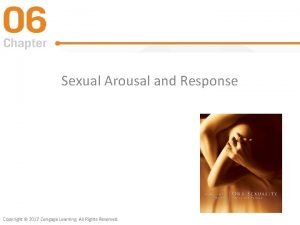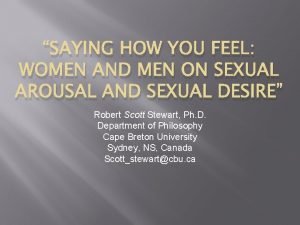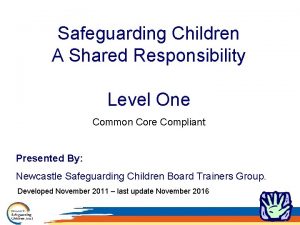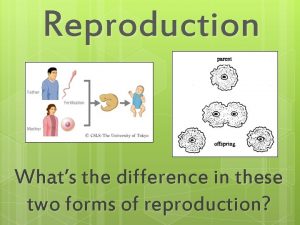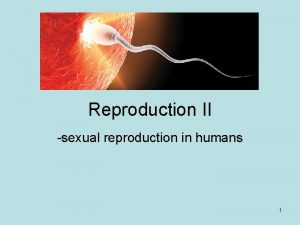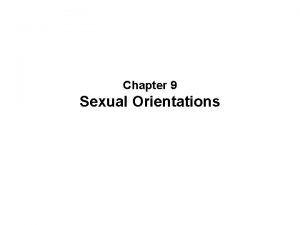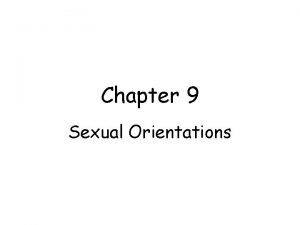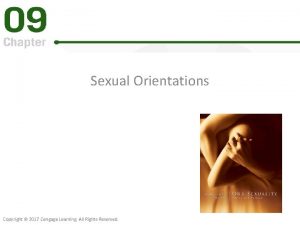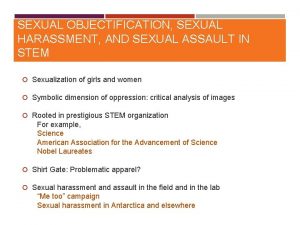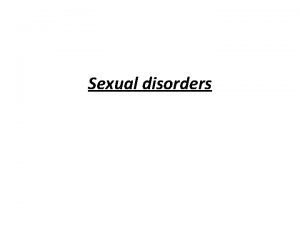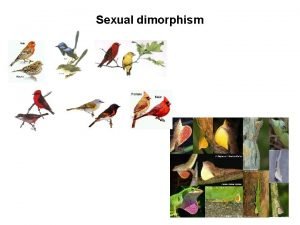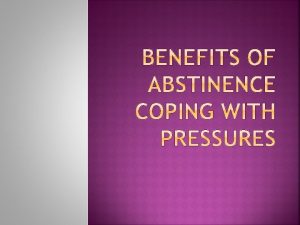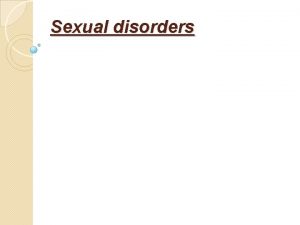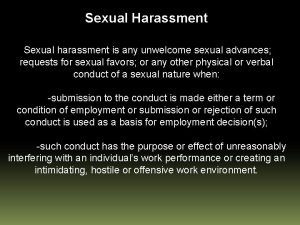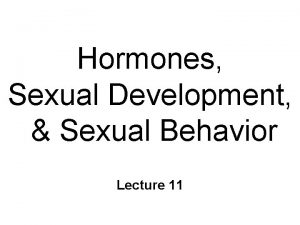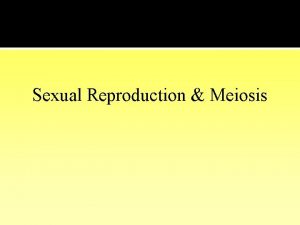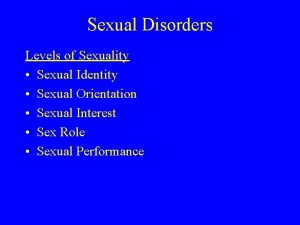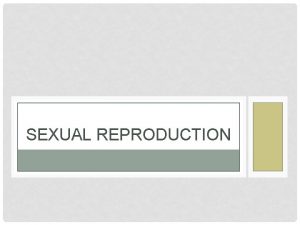Chapter 9 Sexual Orientations Sexual Orientation Sexual orientation






































- Slides: 38

Chapter 9 Sexual Orientations

Sexual Orientation • Sexual orientation represents one’s distinct sense of a natural preference and consistent attraction to sexual and romantic partners. • Sexual orientation may have 3 distinct components: – Affective (feelings of attraction, desire, love), Behavioral, and Self-identity • Klein Sexual Orientation Grid (KSOG) – This model includes seven dimensions: attraction, behavior, fantasy, emotional preference, social preference, self-identification, and lifestyle.

A Continuum of Sexual Orientations Primary erotic, psychological, emotional, and social orientation • Homosexual – Orientation toward same sex – Gay men and lesbians • Bisexual – Orientation toward both same and other sex • Heterosexual – Orientation toward other sex • Asexual – No sexual attraction toward either sex

Kinsey’s 7 -point continuum • Distinctions between homosexual and heterosexual are not as clear cut as many believe them to be • Scale based on both feelings of attraction & sexual behavior • Limitation: gives erroneous impression of fixed orientation Fig. 9. 2 Kinsey’s continuum of sexual orientation (adapted from Kinsey et al. , 1948, p. 638).

Kinsey’s 7 -point Continuum • 0 = exclusive contact with and erotic attraction to the other sex • 7 = exclusive contact with and erotic attraction to the same sex • Men are more likely to be found on far ends of scale • Women who identify as heterosexual are 27 times more likely than heterosexual men to express moderate or more same sex attraction

Kinsey’s Scale

Sexual Orientations • Past Kinsey data = 2% of females & 4% of males were exclusively gay • Men are more likely to fall at the extremes • The gay/lesbian/bisexual community generally cites a 10% combined figure. • Upon review of over 50 years of research, King concludes that about 3 -5% of adult American men and about 1% of adult American women are homosexual. Bisexuals are not included in these figures.

Sexual Orientations • NHSLS data: 1. 4% of females & 2. 8% of males identify as homosexual • May depend on how question is asked – In NHSLS study, 5% of men and 4% of women said they had sex with person of same sex since age 18 – Global Sex Survey: average of 12% of respondents from 41 countries said they had same-sex experience

Bisexuality • Researchers as well as the gay/lesbian/ bisexual community now agree that bisexuality is a legitimate classification of sexual orientation, distinct from both heterosexuality and homosexuality. • More women identify as bisexual than men – May be due to greater social tolerance for same-sex affection between women • Rates of bisexuality have tripled in past decade

Bisexuality • Types of bisexuality – Real orientation: individual feels attracted to both sexes – Transitory orientation: temporary bisexual involvement by someone who is actually homosexual or heterosexual – Transitional: when someone is changing from one orientation to another – Homosexual denial: attempt to deny exclusive homosexuality to avoid stigma of homosexual identity.

Sexual Fluidity • Variability in attraction at various times and situations • For women – Sexual fluidity is more common • For men – Sexual fluidity is much less common

Asexuality • Asexuality: feeling no sexual attraction to either sex – Rarely studied – National study in Britain of 18, 000 people found that 1% of individuals were asexual – According to Asexual Visibility and Education Network, asexuality is a sexual orientation, not a choice--therefore, different from celibacy – Asexual people lack sexual attraction to others, but still have desire for friendships, affection, and partnerships – Some asexual people masturbate, but feel no interest in sexual activity w/a partner

Origins of sexual orientation • Neither heterosexuality nor homosexuality nor bisexuality has a single cause. • Heterosexuality is the “norm” because the vast majority of people are heterosexual; other orientations are a normal part of human diversity. • Biological, psychological and socio-cultural influences interact to produce a person’s adult sexual orientation.

What Determines Sexual Orientation? Psychosocial Theories • Focus on role of life experiences, parenting patterns, or psychological attributes of individual • Attempt to explain the “cause” of homosexuality • Theories – “By Default” Theory – The Seduction Myth – Freud’s Theory • Parenting patterns or early childhood experiences; no research to support

What Determines Sexual Orientation? Biological Theories • Focus on biological causes for sexual orientation • Genetic factors – Homosexuality as familial – Identical twin studies – Homosexuality and gender nonconformity • Implications if biology is destiny – May lead to greater acceptance – Genetic engineering, tolerance for “defective” orientation, and intolerance for choices

What Determines Sexual Orientation? Psychoanalytical • Freud’s Victorian biases. • Belief that sexual orientation depended upon how the Oedipal complex was resolved – Fixation or regression because of a domineering, rejecting mother would lead a boy to turn to men for love > male homosexuality – An absent father and cold, rejecting mother would lead to female homosexuality • Interesting, popular theory but no reliable evidence has been found to support it.

What Determines Sexual Orientation? Social Learning/Behaviorism • Social learning theory – rewarding experiences with same-sex or bad experiences with other-sex individuals early in life. – Although some homosexuals have this childhood background, so do many heterosexuals. – Most lesbians have had pleasurable sexual relations with men but still prefer sexual relations with women. – Boys from cultures in which adolescent same-sex activity is encouraged, there is no greater ratio of adult homosexuality.

Genetic Factors • Concordance rates for identical twins is about 52% but only about 22% in fraternal twins. • Certain DNA patterns on the X chromosome (the genes a man inherits from his mother) appear to be associated with male homosexuality. No such pattern has yet been identified for lesbians. • 50 -60% of a person’s tendency toward one sexual orientation of the other appears to be genetic.

Brain Differences • Differences between heterosexual and homosexual men are found in a small region of the hypothalamus as well as a major bundle of nerves connecting the two halves of the brain. – These parts of the homosexual men’s brains were more similar to brains of heterosexual women than they are to brains of heterosexual men.

Effect of Prenatal Enviroment • The mother’s immune system changes with each birth and may affect her younger sons. – Homosexual men have more older brothers than heterosexual men; each additional older brother increases the probability that the younger brother will be homosexual by 33%. – There is no evidence that sexual activity or other influences of the older brothers is the cause of this phenomenon.

Effect of Prenatal Enviroment • Animal studies reveal that prenatal treatment with hormones will result in homosexual behavior. – Hypothalamus’ of male homosexuals respond to estrogen in the same way as heterosexual women; the hypothalamus appears “feminine. ” – Other hormonal effects – Homosexuals are more likely to be left-handed – Lesbian finger length studies – similar to males


Prenatal Development • Ellis and Ames claim that the critical period for development of sexual orientation comes between 2 nd and 5 th months of pregnancy; others claim that hormones have an effect in the first year or two following birth. The genitals have been differentiated since weeks 7 -12. • Maternal stress, genetic-hormonal factors, drugs, and immune system functioning may all play a role in the biological component of orientation.

Heredity/Environment? • Both biological and social influences contribute to the development of sexual orientation, whether heterosexual, bisexual or homosexual. • Biological factors predispose an individual to a particular sexual orientation. • Today there is stronger evidence for the biological contribution in men than in women; the sexual fluidity of bisexual women emphasizes the importance of social context in women’s relationships.

History • Pederasty – an accepted practice in some parts of ancient Greece; sexual behavior between adult men and adolescent boys as a natural part of his social education. – Because it was accepted in society, the “boys” seem not to have been harmed by this practice and there are many artifacts created by both the young men and their mentors attesting to their deep love and commitment to one another. – Heterosexual marriage and having children was still every adult male citizen’s duty to the society. – Adult men were also free to have female lovers. Ultimately, male pleasure was the rule of the day.

History • Some Hebrew groups, prior to the 7 th century B. C. practiced same-sex religious rituals, which were later banned during a later movement to unify the Hebrew “nation, ” hence the strong, antihomosexuality language in Leviticus. • Female homosexuality was dealt with less harshly because there was no spillage of the “sacred seed. ”

History • Early Christians, following Roman tradition, were initially tolerant of same-sex behaviors, including pederasty. • Later, St. Thomas Aquinas (13 th century) taught that the only purpose of sex was reproduction; therefore homosexuality was unnatural. • Not until the 17 th century did same-sex acts become considered criminal.

History • Late 1800 s – homosexuality become considered a sign of mental illness. By the early 1900 s intolerance of homosexuality reached an all-time high. • 1957 – Evelyn Hooker’s research found that there are no psychiatric differences between heterosexual and homosexual men. • 1973 – American Psychiatric Association removed homosexuality from its list of mental illnesses. • The Catholic church no longer considers homosexual orientation (desire) sinful but continues to condemn same-sex behaviors.

History • Late 1800 s – homosexuality become considered a sign of mental illness. By the early 1900 s intolerance of homosexuality reached an all-time high. • 1957 – Evelyn Hooker’s research found that there are no psychiatric differences between heterosexual and homosexual men. • 1973 – American Psychiatric Association removed homosexuality from its list of mental illnesses. • The Catholic church no longer considers homosexual orientation (desire) sinful but continues to condemn same-sex behaviors.

Current Views • 2000 – 46% of Americans view homosexuality as sinful, down from 54% in 1998. About 80% favor equal housing and employment protection for gays and lesbians. • 2003 – U. S. Supreme Court rules against state laws that prohibit the sexual expressions of homosexuality. • 2003 – 2/3 of Fortune 500 companies offer benefits to same-sex domestic partners.

Homophobia • 90% of gay men have been verbally abused or threatened (1989). • Most mental health problems among gays and lesbians can be attributed to “minority stress. ” • Homophobia – term first used in 1960 s implying that negative attitudes toward homosexuals reflect irrational fears. • Sexual prejudice – refers to negative attitudes and behaviors toward homosexuals but without implication as to the origin of these feelings.

Causes of Homophobia and Hate Crimes • • Lack of acceptance and valuing Traditional gender role stereotypes Extreme manifestation of cultural norms Denial of homosexual feelings

States With No Hate Crime Laws

Sexual Minorities and the Media • Effects of increasing exposure • Portrayal of gay, lesbian, and bisexual individuals as “regular folks” • Individuals cannot determine sexual orientation of individual shown on a video

Coming Out and Disclosure • Coming Out – Several steps involved – Self-acknowledgement – Self-acceptance • Disclosure – – Passing: risks and benefits Telling family can be difficult Involvement in the LGBT community Double minority • Individuals who are both sexual and racial minorities

Same-Sex Relationships • Similarities with heterosexual couples • More egalitarian than other-sex relationships • Sex Differences – Lesbians more likely than gay men to be monogamous and value emotional intimacy

Family Life • Variations – Same-sex couple with children – Single individual with children • Same-Sex Parenting – Adoption laws – Children of LGB parents do not differ from those of heterosexual parents

Gay Rights Movement • Began in 1969 with Stonewall Rebellion • Goals – Decriminalization of private sexual behavior – Legal protection from discrimination – Legal protection for same-sex families • Health care • Marriage • Adoption
 Therapeutic orientations
Therapeutic orientations Ethnocentric orientation example
Ethnocentric orientation example Butterflies true friends strangers barnacles
Butterflies true friends strangers barnacles Ap psychology sexual motivation
Ap psychology sexual motivation Sexual orientation gender identity
Sexual orientation gender identity Sexual orientation stereotypes
Sexual orientation stereotypes Chapter 20 sexual reproduction in animals
Chapter 20 sexual reproduction in animals Pedigree miscarriage symbol
Pedigree miscarriage symbol Chapter 10 sexual reproduction and genetics
Chapter 10 sexual reproduction and genetics Chapter 13 meiosis and sexual life cycles
Chapter 13 meiosis and sexual life cycles Chapter 13 meiosis and sexual life cycles
Chapter 13 meiosis and sexual life cycles Chapter 1 the human body an orientation
Chapter 1 the human body an orientation 1
1 Wasac
Wasac A sexual reproduction in humans
A sexual reproduction in humans Sexual abuse signs and symptoms
Sexual abuse signs and symptoms Definition of sexual maturity
Definition of sexual maturity Primary sex characteristics
Primary sex characteristics The effect of the sexual counterrevolution was
The effect of the sexual counterrevolution was Deflationary theory
Deflationary theory Sexual responce cycle
Sexual responce cycle A sexual reproduction involves
A sexual reproduction involves Define sexual reproduction
Define sexual reproduction Section 1 meiosis
Section 1 meiosis Types of sexual relationships
Types of sexual relationships Guyana sexual offences act
Guyana sexual offences act Louisiana sexual harassment training
Louisiana sexual harassment training Alankrita singh ips
Alankrita singh ips Objectives of sexual harassment
Objectives of sexual harassment Common female sexual fantasies
Common female sexual fantasies Sexual ethics
Sexual ethics Sexual urges examples
Sexual urges examples What is sexually coercive behavior
What is sexually coercive behavior Arousal cycle
Arousal cycle Que es la seleccion sexual
Que es la seleccion sexual Sexual arousal in men
Sexual arousal in men Sexual abuse signs and symptoms
Sexual abuse signs and symptoms Whats asexual reproduction
Whats asexual reproduction Sexual reproduction in human
Sexual reproduction in human
